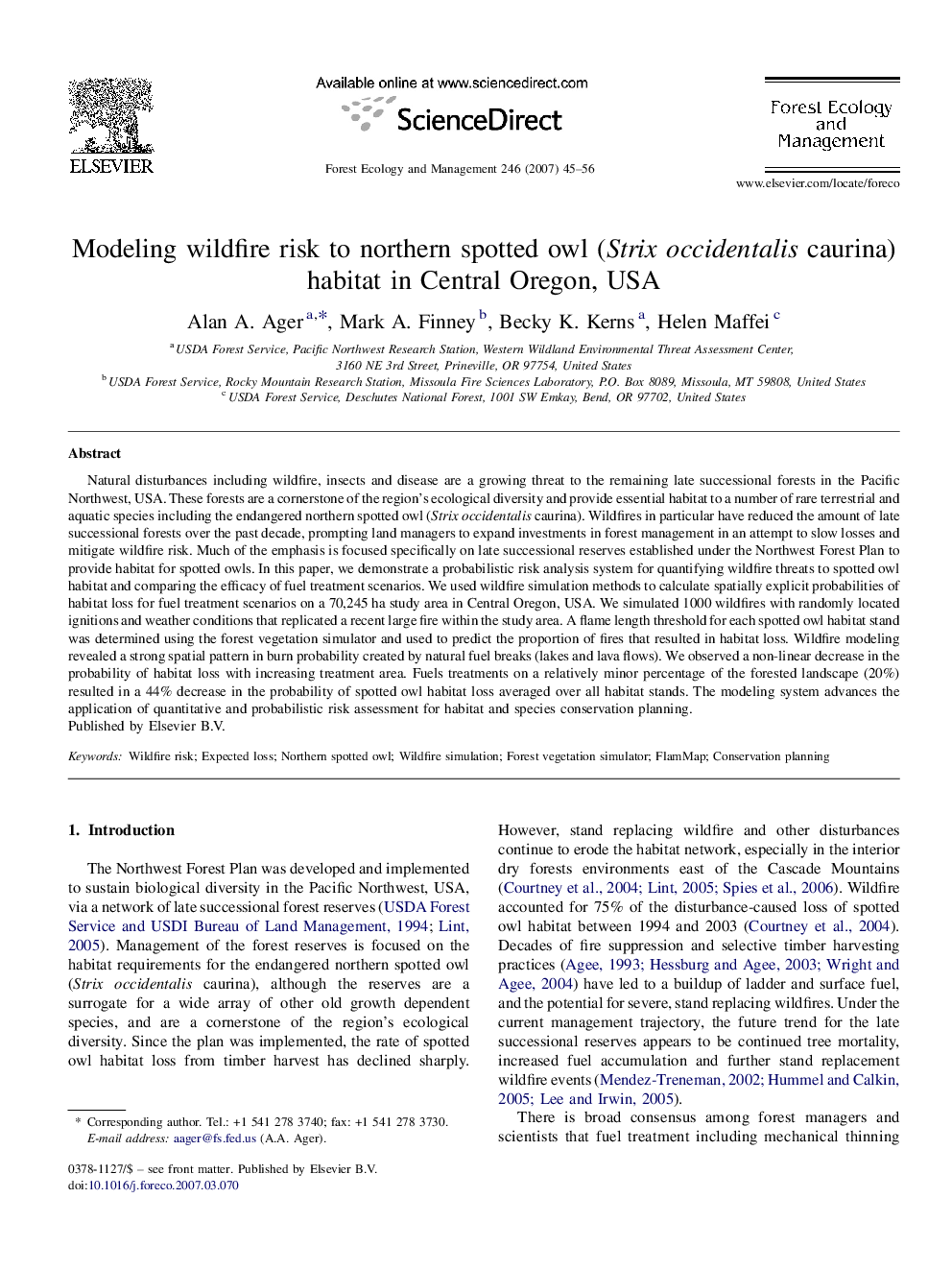| کد مقاله | کد نشریه | سال انتشار | مقاله انگلیسی | نسخه تمام متن |
|---|---|---|---|---|
| 90561 | 159388 | 2007 | 12 صفحه PDF | دانلود رایگان |

Natural disturbances including wildfire, insects and disease are a growing threat to the remaining late successional forests in the Pacific Northwest, USA. These forests are a cornerstone of the region's ecological diversity and provide essential habitat to a number of rare terrestrial and aquatic species including the endangered northern spotted owl (Strix occidentalis caurina). Wildfires in particular have reduced the amount of late successional forests over the past decade, prompting land managers to expand investments in forest management in an attempt to slow losses and mitigate wildfire risk. Much of the emphasis is focused specifically on late successional reserves established under the Northwest Forest Plan to provide habitat for spotted owls. In this paper, we demonstrate a probabilistic risk analysis system for quantifying wildfire threats to spotted owl habitat and comparing the efficacy of fuel treatment scenarios. We used wildfire simulation methods to calculate spatially explicit probabilities of habitat loss for fuel treatment scenarios on a 70,245 ha study area in Central Oregon, USA. We simulated 1000 wildfires with randomly located ignitions and weather conditions that replicated a recent large fire within the study area. A flame length threshold for each spotted owl habitat stand was determined using the forest vegetation simulator and used to predict the proportion of fires that resulted in habitat loss. Wildfire modeling revealed a strong spatial pattern in burn probability created by natural fuel breaks (lakes and lava flows). We observed a non-linear decrease in the probability of habitat loss with increasing treatment area. Fuels treatments on a relatively minor percentage of the forested landscape (20%) resulted in a 44% decrease in the probability of spotted owl habitat loss averaged over all habitat stands. The modeling system advances the application of quantitative and probabilistic risk assessment for habitat and species conservation planning.
Journal: Forest Ecology and Management - Volume 246, Issue 1, 16 July 2007, Pages 45–56